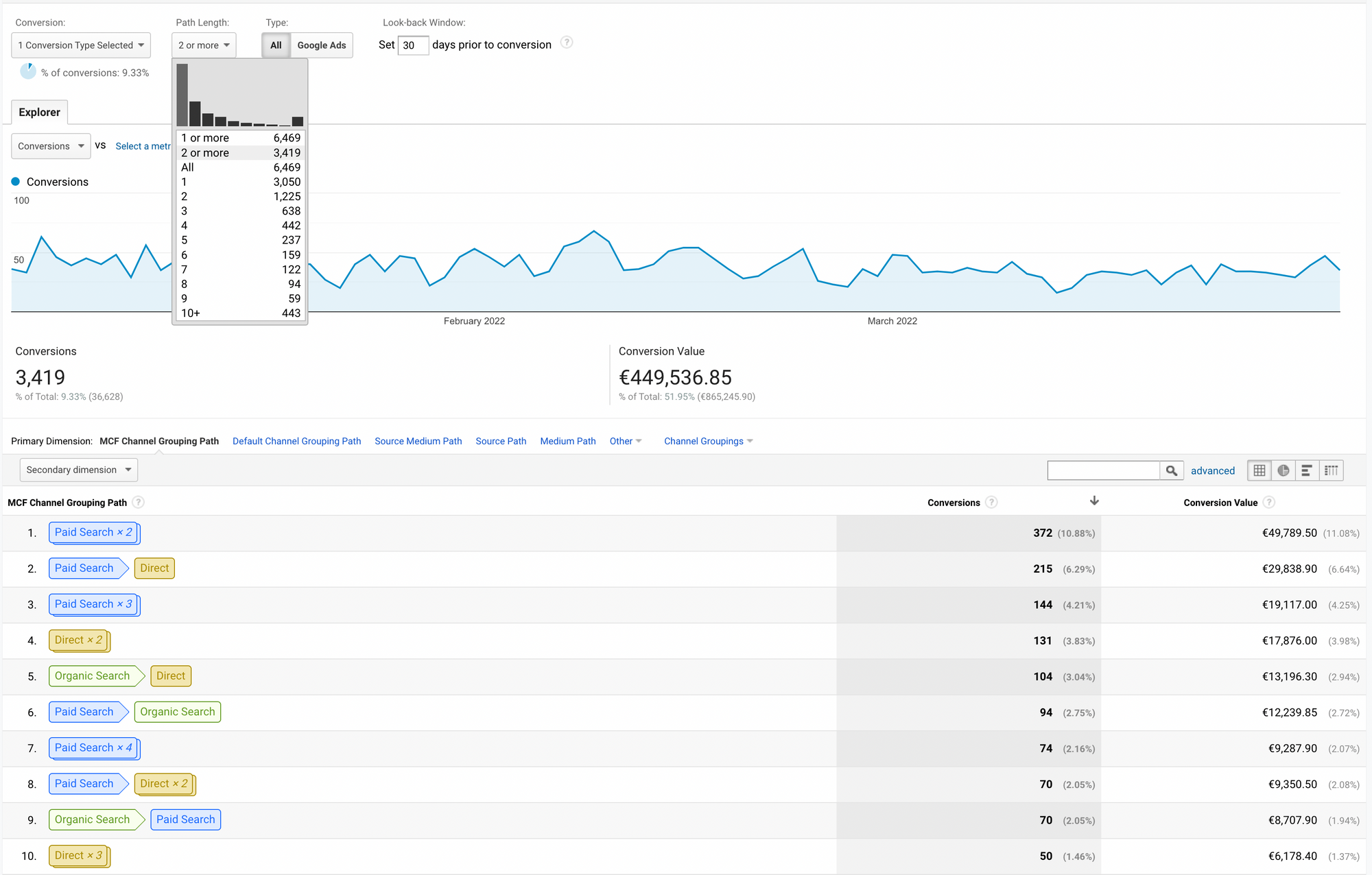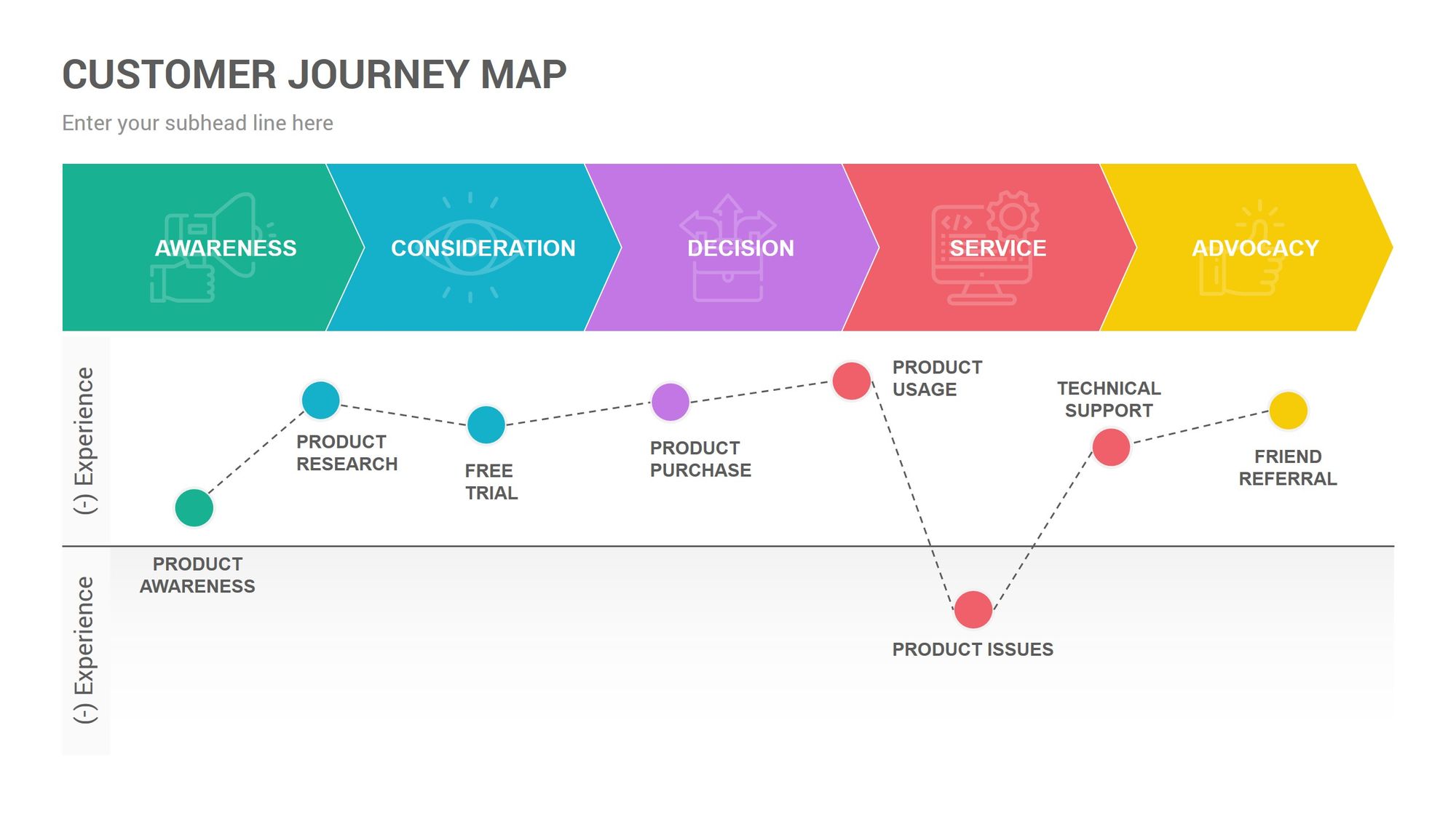
Data analysis is commonly used to uncover business issues or hidden opportunities.
3 kinds of analysis: Prescriptive, Descriptive and Predictive make the difference in helping you understand which product you will sell more if you make a bundle of products or a specific promotion, which products to show up for a particular cluster of customers or which offers to propose to which segment.
If customers who read an advertisement or a product recommendation are not ready to buy, they'll not react to the content. Data analysis helps understand how to increase reaction percentage and convert to the result.
Mapping the user's path (or Customer Journey) of customers/users who browse the shop is possible to test different kinds of content ed offers in each phase. For example, when someone subscribes for the first time, they receive a welcome email and a coupon (maybe) to tempt the lead to make the first purchase to try the product and the user's experience. What happens next? A lot of e-commerce doesn't provide onboarding in case of purchase or does not collect feedback during the first purchase (which is the most important for retention). In this way, they leave all events to chance.
Retention strategy creation it would be more effective if it were weekly provided for a brand storytelling email or about the purchased product, sharing values or providing PRE-PURCHASE reassurance in a phase where the customer is more confident to pay attention.
Before creating the Customer Journey Maps that you would like your customers to follow, it would be better to start from what is already happening: by analyzing users' web surfing on your website, even from Google Analytics, creating customer journeys is possible.
Identification and mapping of the journey is a thorny process. Still, it's worth it to dedicate time before defining the paths different kinds of customers could undertake to purchase the shop's products.
The questions to ask are:
- Which channel do they come from?
- What main interests do they have?
- Where did they spend the most time?
- How many steps did they take to get to the order confirmation?
- What are they looking for on the website?
- How was their experience on your website while purchasing the product, and what can be improved?
It's better to start step by step and prioritize the most critical customer profiles for the business.
The key, however, is to use existing data to map the customer journey based on psychological principles to increase sales.
Using Google Analytics to Map the Customer Journeys
Understanding how users surf into your shop is essential to make sales which follow a psychologically informed pattern (o model)

For example, why should sales be low if you offer a discount code to all first-time visitors? The offer may be great, but consumers still lack the motivation to buy. In this case, no matter how much the products are discounted, the problem is another.
This typical scenario can be analyzed by studying the browsing behaviour's flow and evaluating how many times customers visit privacy or terms and conditions pages. Identifying a perceived authority problem is the first step to solving it and starting selling.
Make sure you look at different user segments: first-time visitors, returning visitors, and buyers or create a tailor-made component for visitors with long sessions but without purchases.
Which page do most first-time visitors see after landing on your home page? In the first stage of a customer journey map, you will notice that most of these "first-touch" pages revolve around creating awareness before making a purchase.
Analyze the primary conversation path to evaluate their platforms at each stage.
An omnichannel strategy is the key because ready-made buyers don't just materialize on your website. Instead, it often requires multiple points of contact along numerous channels or platforms before they finally pull the trigger.
Therefore, it's very important to optimize users' experience as they browse from one platform to another.
People might find the shop through a social media referral, read your tweets, or browse your Instagram profile. Then, they may return to your website to learn more before handing over the credit card. Knowing the typical paths of your website is a fact, but it's quite another to understand when and why customers use different channels before buying.
Fortunately, you can find these data for free using Google Analytics' Primary Conversion Paths report: this report will show you which paths users follow on different channels for the buyer's journey. It can tell if people are being educated on specific platforms and how they reached your website.

Note these different channels and their specific order sequence before purchasing. If social media plays a massive role in awareness, add it to your shopper's journey.
Pay attention to "Messy Middle."
During the analysis and optimization of the online customer experience, it's always necessary to keep in mind the so-called "messy middle," which is what happens between the first trigger, which is the stimulus that starts the funnel, and the final purchase decision.
People seek and evaluate more information about products and brands, proceeding according to two possible mental schemes:
- exploration, an expansive activity;
- evaluation, a reductive activity.
Anything a person does during their Customer Journey falls into one of these two operating modes, and it's repeated, generating a loop between the two until the final purchase decision is made.

What to pay attention to?
During the analysis and optimization of the online Customer Experience, it’s necessary to consider the so-called "messy middle": what happens between the first trigger, that is, the stimulus that inaugurates the funnel, and the final purchase decision is not so simple and standard, it changes from one person to another and depends on multiple variables and touchpoints.
What can happen at this middle stage of the purchasing process? People seek and evaluate more information about products and brands, proceeding according to two possible mental schemes:
• exploration, an expansive activity
• evaluation, a reductive activity.
Anything a person does during their online Customer Journey falls into one of these two operating modes and repeats itself, generating a loop between them until the final purchase decision is made.
How do you get noticed in this "messy middle"? It’s possible to take advantage of cognitive biases, which influence user behaviour during the customer experience. The power of immediacy, social proof, scarcity, authority bias, and the power of gratuitousness are just some of the psychological mechanisms that can act as valuable tools to guide the user, win its preferences and build loyalty. In a nutshell, we're talking about the 7 rules of Cialdini.
The strategy purpose that presides over the Customer Experience review must not be to force the consumer in one direction but to offer him all the necessary information to support his final decision.
Studying, designing and optimizing the Customer Experience is equivalent to strengthening the brand identity in its internal coherence and external perception, providing a complete and all-encompassing experience to those who interface with the brand and avoiding leaving empty spaces in consumers' decision-making process.

